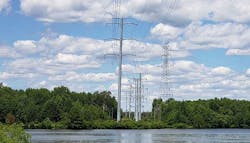Achieving Energy Efficiency in Data Centers
One of the greatest challenges global data centers face is the need to meet ever increasing demands while at the same time becoming more energy efficient.
If you consider a data center with power use of 10 MW, servers may consume 50 per cent of that energy with a power usage effectiveness (PUE) of 1.6. A two per cent increase in the energy efficiency of the server power supply leads to a 1.6 per cent decrease in electricity use. That translates to 1.4 million kWh saved annually, which is equivalent to reducing CO2 emissions by more than 21 million pounds. At $0.07 per kilowatt-hour, that’s $98,000 in savings. In large data centers, which may have an even higher power consumption and billing rate, these kinds of savings adds up fast.
Data centers already account for at least three per cent of worldwide electricity use and there is intense pressure to drive up processing capacity and efficiently manage energy consumption.
Traditionally, data centers have used 12 V power shelves, but as higher performance compute and storage platforms demand more power, moving from 12 V to 48 V offers inherent efficiency gains, with a reduction in the current draw by a factor of four, equating to 16 times lower distribution losses. This ultimately reduces costs through significantly better thermal performance, optimized efficiency, with increased power density.
A major economic driver for data centers to achieve equipment cost efficiency comes from standardization. The adoption of Open Compute standards based solutions has occurred, in part, because of the need for more efficient data centers. This supports global carbon reduction imperatives, reduced energy consumption and lower operation costs compared with traditional data centers.
While roughly 15 per cent of data centers have already adopted 48 V power architectures, it is estimated that half of leading hyperscalers will make the move to 48 V by the middle of this decade, with traditional enterprise deployments following suit as standards are more widely adopted.
Addressing demands for increased power density and rack payload at both the component and system level, Advanced Energy is supporting the transition from conventional 12 V power schemes to 48 V architectures with its series of Open Compute Project (OCP) ORv3 compliant power shelves. Developed in collaboration with major OCP users, the 48 V power rack aims to create a common power platform for customers across deployments, which should lead to increased adoption and economies of scale that benefit all OCP users.
As the industry aims to increase the efficiency of data centers while minimizing environmental impact, leading-edge technologies like those developed by Advanced Energy will enable hyperscale and data center customers to efficiently deliver high-performance IT infrastructures.
Brian Korn is the Vice President of Data Center Computing at Advanced Energy and brings broad experience in embedded power solutions for data center computing, hyperscale, telecom and network products. Contact Advanced Energy to learn more about how their OCP compliant platform is an enabler in bringing interoperability, enhanced reliability of compute and storage applications and energy savings to hyperscale, enterprise data centers and edge computing deployments.



